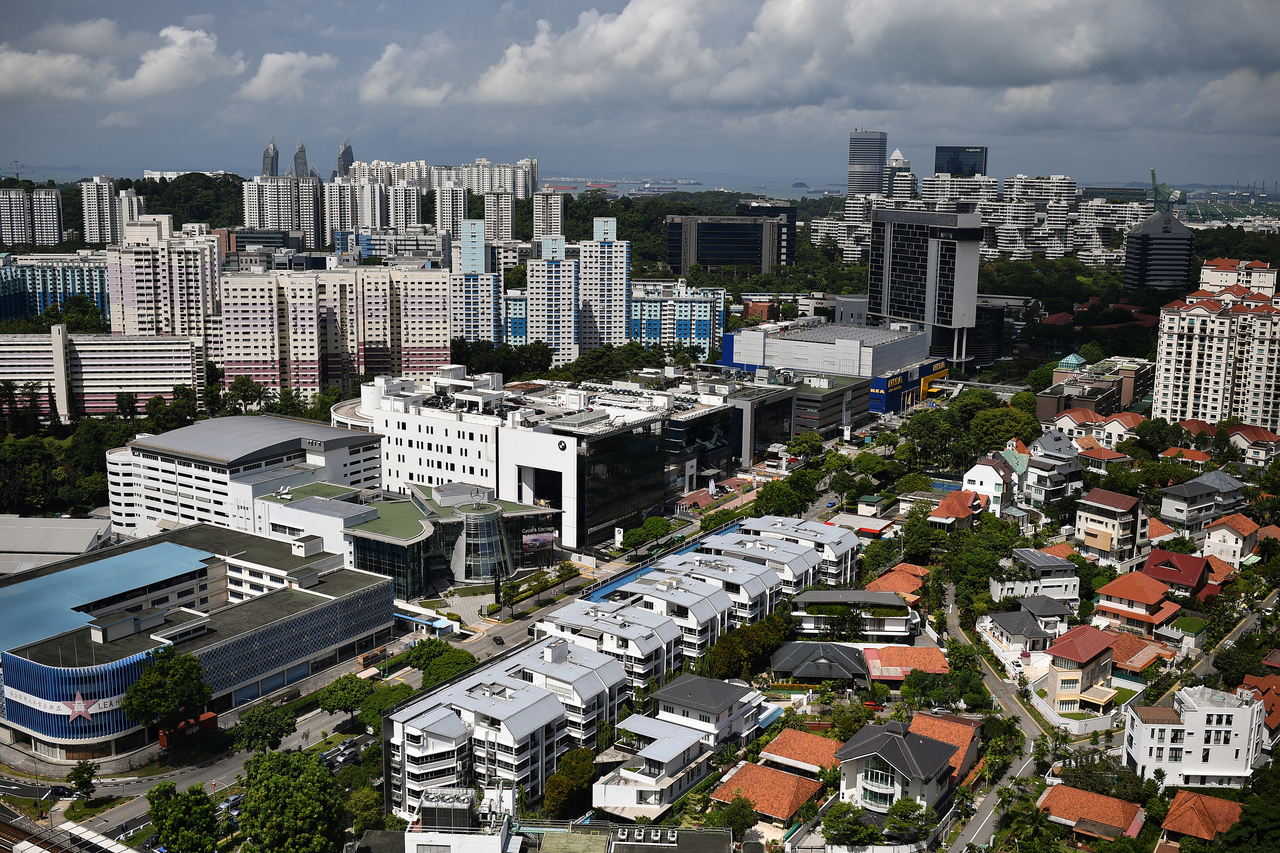Development charge rates up 10.9% for non-landed residential use, 0.7% cut for commercial use
Sign up now: Get ST's newsletters delivered to your inbox

Developers pay development charges to the state for the right to enhance the use of some sites or to build bigger projects on them.
PHOTO: ST FILE
Follow topic:
SINGAPORE - Development charge (DC) rates for landed and non-landed residential uses have been raised for the half-year period starting on Wednesday (Sept 1).
This is in line with an improving economic outlook, bullish Government Land Sales (GLS) bids and brisk sales in the private housing market.
But DC rates for commercial use are pared for a third time, albeit at a slower rate of 0.7 per cent, following a 1.5 per cent reduction during the previous revision that took effect on March 1.
This could be due to a turnaround in office rents and prices, even as the retail sector is still reeling from the pandemic-led restrictive measures and retail rents and prices are still dropping, JLL Singapore said.
Developers pay DC to the state for the right to enhance the use of some sites or to build bigger projects on them.
For the landed residential use, DC rates were raised in 116 sectors by 4 per cent to 18 per cent, with rates unchanged for two other sectors.
On average, the rates have been raised by 6.3 per cent - the largest since September 2013, Huttons Asia noted. This follows a rise of 1.5 per cent during the previous revision.
JLL Singapore's head of research and consultancy, Ms Tay Huey Ying, cited a 6.3 per cent spike in the Urban Redevelopment Authority's price index for landed homes in the first half this year due to robust demand for landed homes.
Based on Realis data, there were 1,778 caveats lodged for landed homes from March to August this year, up 9.9 per cent from 1,618 caveats for the prior six months ended February 2021, she said.
The record sale of a good class bungalow (GCB) in Nassim Road for $128.8 million or $4,005 per sq ft contributed to the 18 per cent increase in Sector 67 (Orange Grove Road, Nassim Road, Napier Road), analysts say.
Meanwhile, DC rates for non-landed residential use have been raised by 10.9 per cent - the steepest since March 2018, Huttons Asia noted. This follows a rise of 0.3 per cent for non-landed residential use during the previous revision.
The DC rates were increased in 116 sectors by 2 per cent to 19 per cent, while that for two sectors remained unchanged.
Signalling strong demand for non-landed residential land, 12 transactions worth $2.59 billion were done between March and August 2021, up from 11 deals worth $1.04 billion transacted between September 2020 and February 2021, Ms Tay noted.
Huttons Asia senior director of research Lee Sze Teck said: "Maxwell House, Ang Mo Kio Avenue 1, Lentor Central, Tengah Garden Walk and Tampines Street 62 have been sold in the past six months at higher prices."
Mr Leonard Tay, head of research at Knight Frank Singapore, attributed a 17.9 per cent increase in DC rates for sectors in the Little India area to "the award of the Northumberland Road site where a winning bid of $1,129 psf per plot ratio (ppr) exceeded previous historical GLS for private home development in that locality.
"For the Thomson and Ang Mo Kio areas, DC rates have risen sharply due to the award of the Ang Mo Kio Avenue 1 site ($1,118 psf ppr) and Lentor Central plot ($1,204 psf ppr) in June and July 2021 respectively," Mr Tay said.
Meanwhile, DC rates for all the other use groups remain unchanged: hotel/hospital, industrial, place of worship/civic and community institution, open space, agriculture, and roads/railways.
Mr Tay noted that DC rates for the hotel/hospital use group did not drop, despite the hospitality sector "still suffering from a lack of tourist arrivals, compromised occupancy rates and travel restrictions mostly in place".
This could be due to a lack of hotel sales or hotel land parcel transactions (excluding transfers) in the past half year, he said.
The Ministry of National Development revises the rates on March 1 and Sept 1 each year, in consultation with the taxman's chief valuer (CV). DC rates are based on the CV's assessment of land values and take into consideration recent land sales. They are stated according to use groups across 118 geographical sectors in Singapore.

